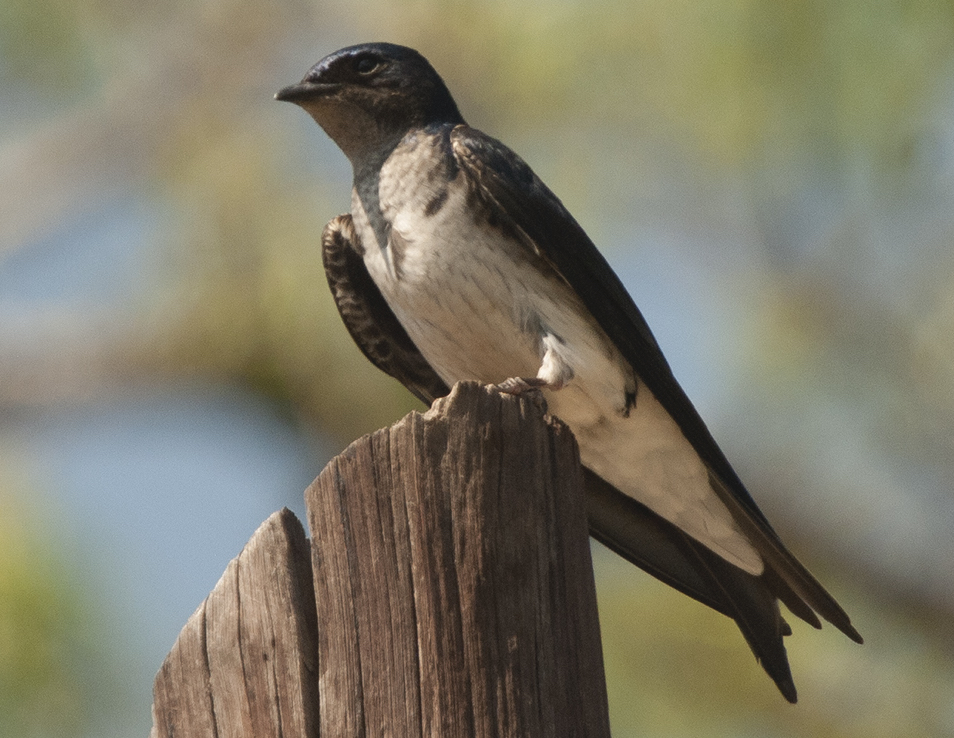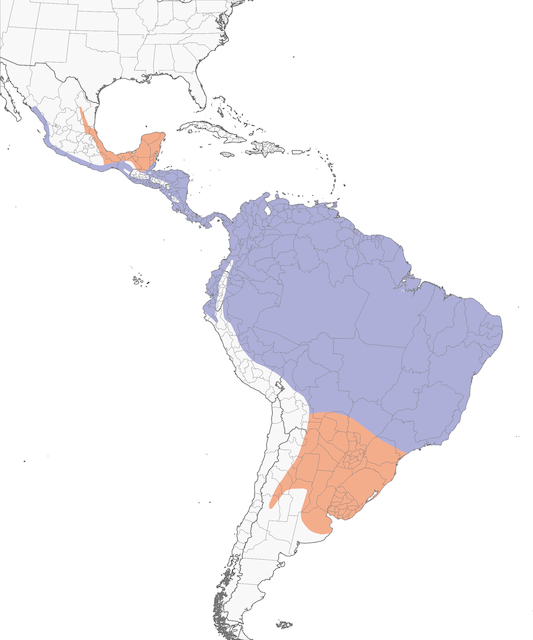 Photo ©
Marcelo Allende
Photo ©
Marcelo Allende
Gray-breasted Martin
Regional Species
This large swallow of the tropical lowlands is fairly common in towns, villages, open and semi-open fields with taller trees and other structures that provide nest cavities. The Gray-breasted Martin is frequently seen flying over water, grasslands and around trees while it searches for flying insects. Most of the year it is seen in groups, except during the breeding season.
Range

Habitat
![]() The Gray-breasted Martin resides in open habitats in tropical lowlands, especially on the edges of forests, land with decayed trees, grasslands, swamps, rivers, coastal marshes, coastal mangroves, savannas, agricultural fields and, in particular, towns or villages.
The Gray-breasted Martin resides in open habitats in tropical lowlands, especially on the edges of forests, land with decayed trees, grasslands, swamps, rivers, coastal marshes, coastal mangroves, savannas, agricultural fields and, in particular, towns or villages.
Food
![]() The Gray-breasted Martin eats insects they find on in flight. It has a preference for larger flying insects such as bees, wasps, beetles, flies, dragonflies, butterflies, moths, crickets and grasshoppers.
The Gray-breasted Martin eats insects they find on in flight. It has a preference for larger flying insects such as bees, wasps, beetles, flies, dragonflies, butterflies, moths, crickets and grasshoppers.
Behavior
![]() The Gray-breasted Martin is usually seen in groups for much of the year, except during the breeding season. During migration and the rainy season, it joins other similar birds to form large flocks. In the rainy season, it can be seen in mixed flocks of tens of thousands of birds.
The Gray-breasted Martin is usually seen in groups for much of the year, except during the breeding season. During migration and the rainy season, it joins other similar birds to form large flocks. In the rainy season, it can be seen in mixed flocks of tens of thousands of birds.
Nesting
![]() The nests are built with fibrous materials such as grass, sticks, straw and green leaves. The Gray-breasted Martin uses mud and straw to make the entrance hole of its nest.
The nests are built with fibrous materials such as grass, sticks, straw and green leaves. The Gray-breasted Martin uses mud and straw to make the entrance hole of its nest.
Appearance
Size & Shape
The Gray-breasted Martins are large swallows with wide and angular wings and a split tail.
Color Pattern
Adult male Gray-breasted Martins have steel blue upperparts, are gray from the chin to the breast, and have a white belly. Females are similar but typically paler in coloration. Juveniles are dull with sooty gray upperparts.
Similar Species
Both sexes resemble female Purple Martins. However, the Gray-breasted Martin lacks the pale forehead and pale hindcollar of the female Purple Martin.
Did you know?!
- The Gray-breasted Martin usually flies in slow circles high in the sky.
- IThe Gray-breasted Martin may gather and roost on power lines in large numbers.